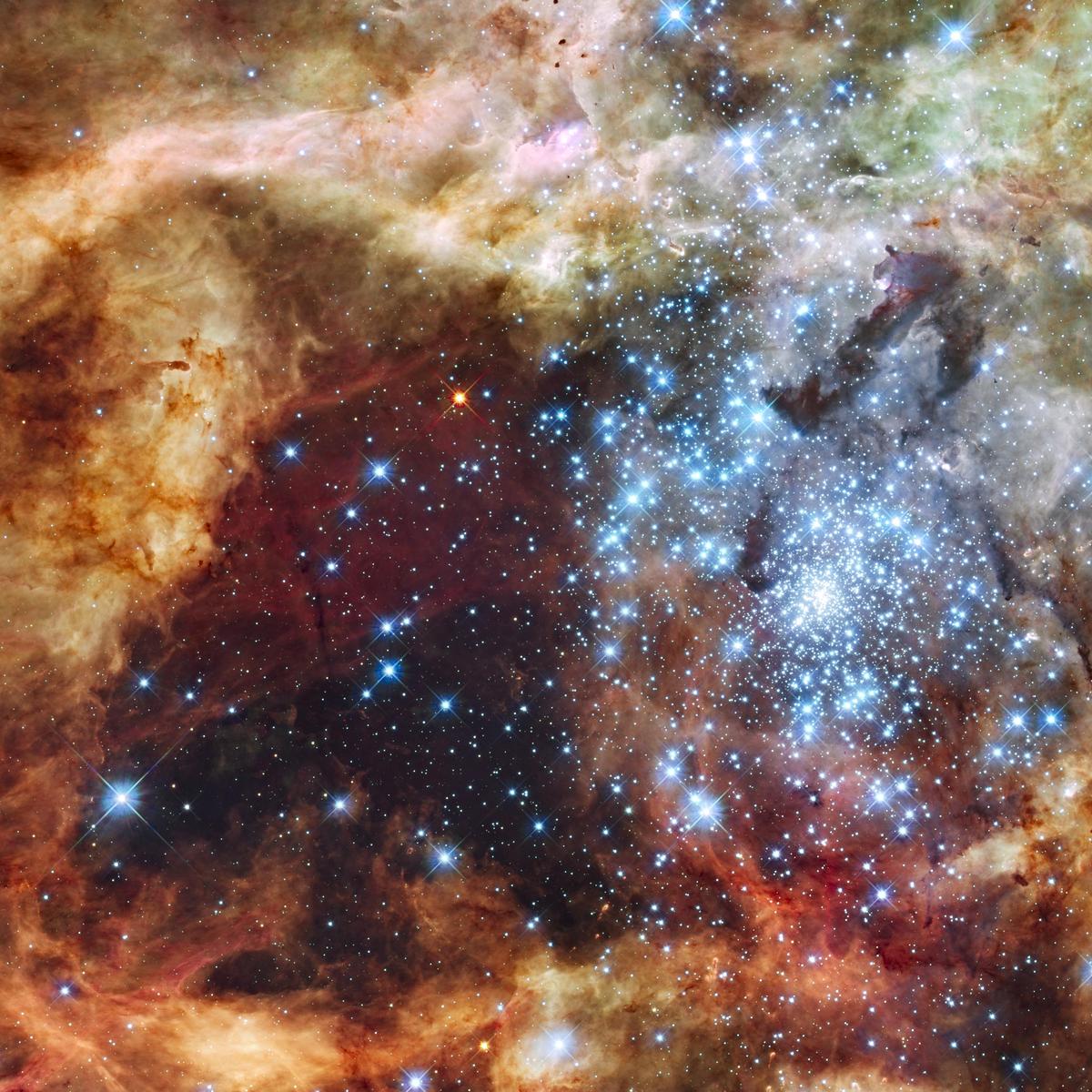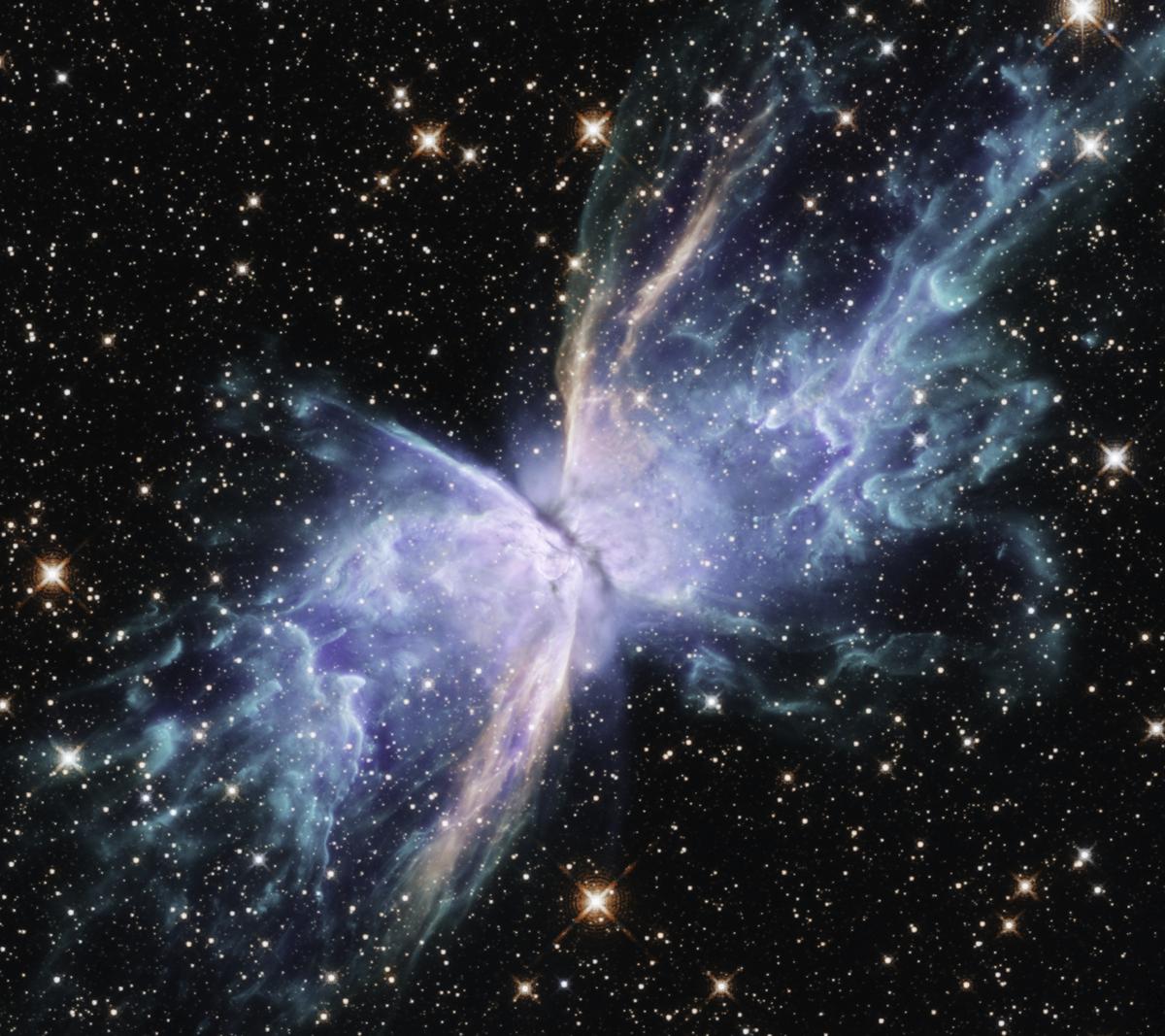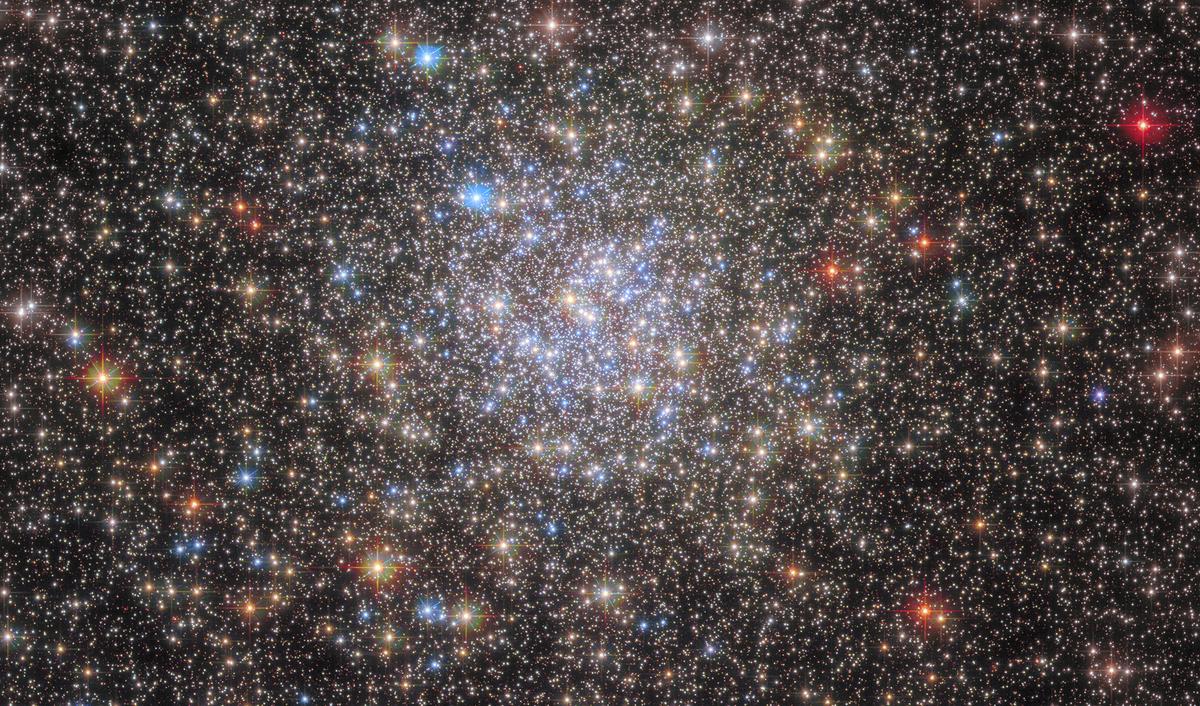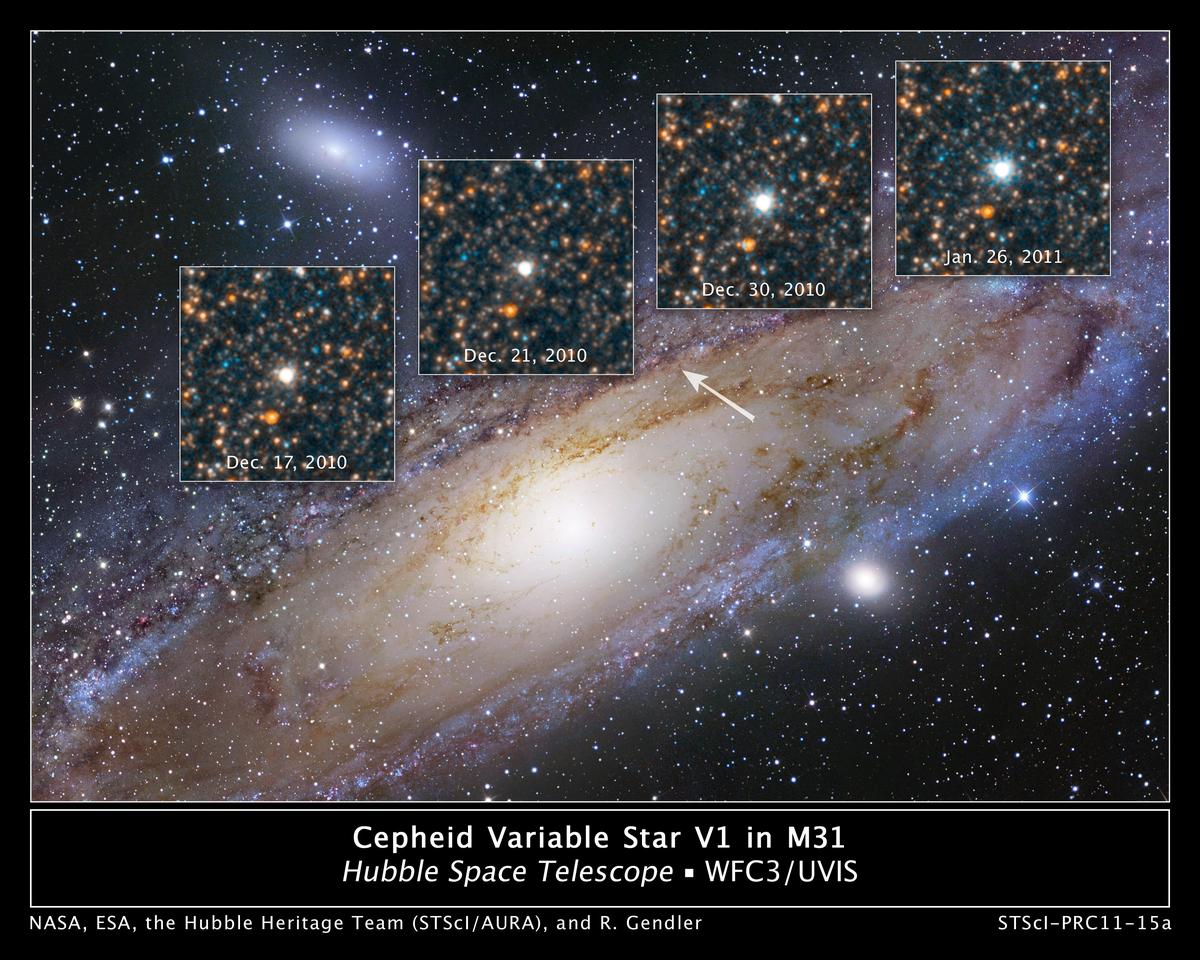From breathtaking snapshots of distant galaxies to game-changing discoveries about the universe’s expansion, the Hubble Space Telescope (HST) has dazzled humankind for 35 years.
After launching on April 24, 1990, Hubble overcame early flaws to become one of NASA’s greatest triumphs. Its vivid images and countless scientific breakthroughs have reshaped our understanding of the cosmos, inspiring new generations of telescopes and astronomers. To celebrate Hubble’s majestic journey for more than three decades, NASA recently released a collection of striking images captured by the HST.
The Hubble Space Telescope being deployed on April 25, 1990.
| Photo Credit:
NASA
The US astronomer Lyman Spitzer proposed the idea of the Large Space Telescope in the 1940s. NASA and the US Congress approved the project in 1969 but faced budget pressures. Then the European Space Agency chipped in with 15% of the LST’s cost in exchange for 15% of its observation time.
The HST, named for astronomer Edwin Hubble, was planned in 1979 and built by 20 companies, universities, and the European Space Agency. It was initially scheduled to be launched in 1986 but that was delayed until 1990 due to technical difficulties and the Space Shuttle Challenger disaster.

This Hubble Space Telescope image captures two clusters full of massive stars that may be in the early stages of merging. The 30 Doradus nebula, also widely known as the Tarantula Nebula, is approximately 170,000 light-years from Earth. It is part of the Large Magellanic Cloud, a galactic satellite of the Milky Way.
| Photo Credit:
NASA, ESA
The HST first had two cameras: the Wide-Field and Planetary Camera (WFPC) and the Faint Object Camera. It also had two spectrographs: the Goddard High-Resolution Spectrograph (GHRS) and the Faint Object Spectrograph (FOS). A high-speed photometer onboard detected light from high-energy sources. Three fine-guidance sensors installed in 1990 made high-precision measurements of the positions of celestial objects.

This view of the Butterfly Nebula from near-ultraviolet to near-infrared helped researchers better understand the mechanics at work in its technicolor “wings” of gas. The star or stars at the nebula’s center are responsible for its appearance.
| Photo Credit:
NASA, ESA, and J. Kastner (RIT)
The WFPC was the most popular. It consists of two cameras. The Wide-Field camera covered large sky areas while the Planetary Camera magnified and improved image resolution. The Faint Object Camera captured light from distant celestial objects with help from an image intensifier.

The scattered stars of the globular cluster NGC 6355 are strewn across this image from the Hubble Space Telescope. NGC 6355 is a galactic globular cluster that resides in our Milky Way galaxy’s inner regions. It is less than 50,000 light-years from the earth. Globular clusters are stable, tightly bound groups of thousands to millions of stars associated with all types of galaxies. Their dense populations of stars and mutual gravitational attraction give these clusters a roughly spherical shape.
| Photo Credit:
ESA/Hubble & NASA, E. Noyola, R.
Scientists and engineers took several weeks to check the HST’s control and communication systems before astronomers working at the Space Telescope Science Institute in Baltimore could see its first images.
Shortly after launch, the HST’s photos were blurred, later found to be because the telescope’s mirror had been ground to the wrong shape. Ground team members soon came up with a corrective device: a series of smaller mirrors called COSTAR to compensate for the primary mirror’s defect.

F. Story Musgrave (foreground) and Jeffrey A. Hoffman are pictured near the end of the first spacewalk in December 1993 to fix the Hubble Space Telescope.
| Photo Credit:
NASA
Astronauts launched in 1993 implemented this fix on the HST, by that time in earth orbit. They removed the high-speed photometer to make way for COSTAR, as well as replaced the WFPC with the WFPC 2, among other upgrades.
The telescope experienced a similar problem in 1997. The analysis of light is of great importance in space research. Blue light has a shorter wavelength and red light has a longer wavelength. If the frequency of incoming light bluer, it means the light source is moving towards the observer. If the frequency is becoming redder, the object is moving away. The HST’s GHRS and FOS devices, which perform this analysis, worked well until 1997. NASA subsequently replaced them with the Space Telescope Imaging Spectrograph that year. This device can analyse frequencies of light from the ultraviolet to the infrared.
The telescope’s antenna transmits approximately 150 Gb of data a week. According to NASA, the HST has observed almost 52,000 stellar objects in 1.6 million observations since launch.
One of the HST’s most significant achievements was to get scientists the data with which they estimated the universe’s age. Before the telescope came along, astronomers didn’t know if the universe was 10 billion years old or 20 billion. To get the answer, astronomers looked at the Cepheid variable stars — a type of star that pulsed in a steady way, its brightness varying over periods of days or months.

| Photo Credit:
NASA
Astronomers could determine the distance to such a star using its luminosity and pulsation rate. Based on that measurement, they could then estimate the distances to various other, more distant celestial objects. Finally, based on all the data, astronomers could estimate how fast the universe was expanding, and work back from there to the universe’s age.
With the HST’s keen observations, they identified more than 800 Cepheid stars in 24 galaxies and thereon that the universe was around 13.8 billion years old.
Astronomers have also created a 3D map of dark matter using data from the HST and other telescopes. The telescope has also found that gamma-ray bursts, the universe’s most energetic explosions, occur in galaxies with rapid star formation and a low proportion of elements heavier than helium.
Numerous galaxies had supermassive black holes at their centres — or so astronomers believed by the early 1990s, and the HST the belief’s underlying assumptions. Closer home, the HST helped find two additional moons of Pluto (Nix and Hydra) and observed seasonal alterations on Pluto’s surface. Its data helped estimate the mass of Eris, the solar system’s heaviest dwarf planet, and based on that indicated the existence of more such objects in the Kuiper Belt and beyond.

| Photo Credit:
NASA, ESA, H. Weaver (JHU/APL), A. Stern (SwRI), and the HST Pluto Companion Search Team
The HST also first studied the atmosphere of an exoplanet: HD 209458-b, a.k.a. Osiris, a hot world located 150 lightyears away. Osiris was found to be within 6.4 million km of its host star and thus a surface temperature of around 1,100° C.
The HST was initially expected to operate for 15 years but it has consistently delivered over the last 35 years and continues to do so. Astronomers commemorated the anniversary of its launch with a stunning image of NGC 1333, a star-forming area located 967 light-years away in the Perseus molecular cloud.
It is impossible to overstate the HST’s pride of place in our understanding of the cosmos. Every pixel of its images has revealed whole new worlds in the great beyond, helping us understand our own place in the cosmos.
Shamim Haque Mondal is a researcher in the Physics Division, State Forensic Science Laboratory, Kolkata.
Published – May 05, 2025 09:08 am IST
